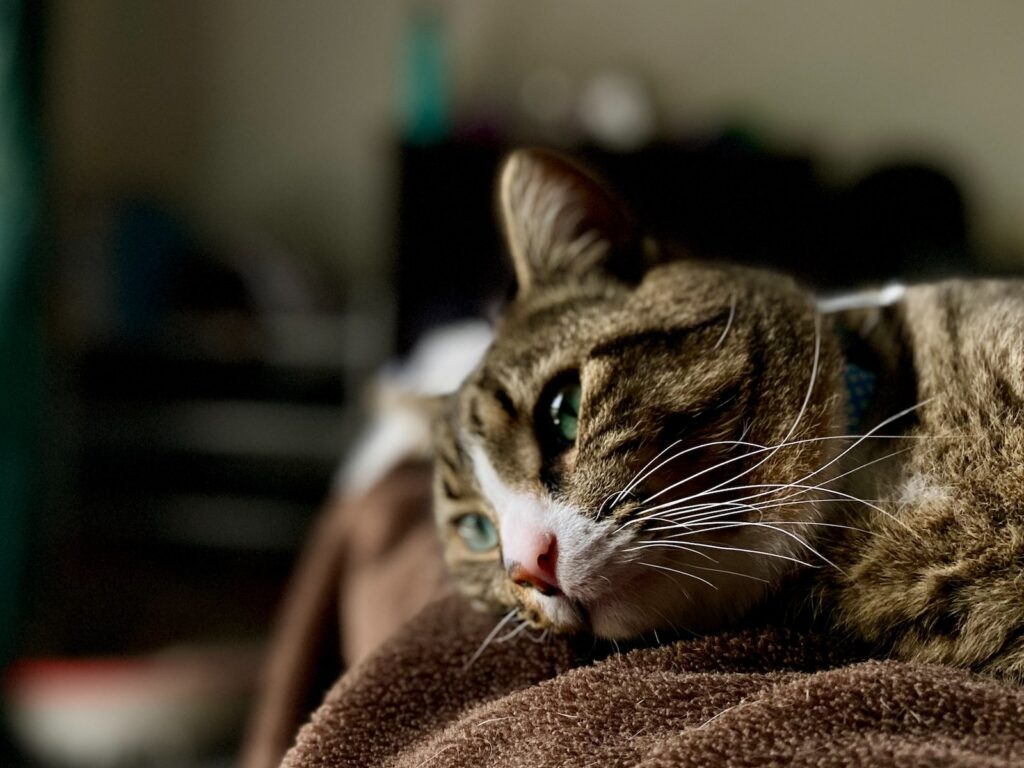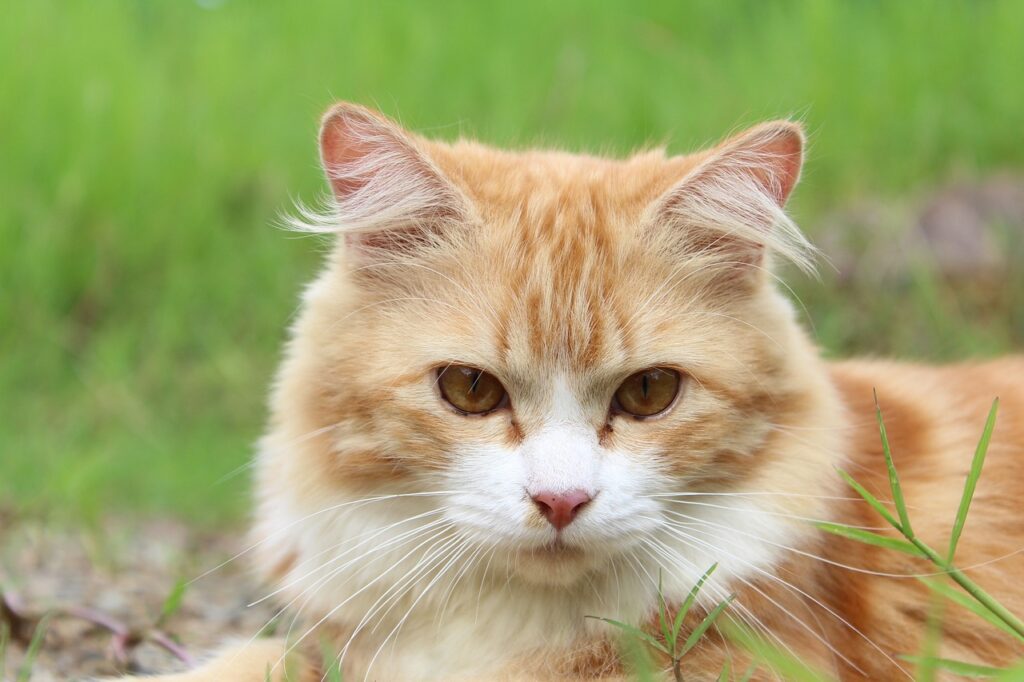Every meow, purr, and twitch of a tail tells a story. As cat aficionados, we are in a perpetual quest to ensure our feline friends are the epitome of health and happiness. While cats may have that mysterious aura wrapped around them, certain health issues are quite common. In this guide, let’s unravel these mysteries for the well-being of our whiskered companions.
Hairball Woes
Ah, hairballs – the bane of many a feline! While grooming is a pastime cats relish, it comes with the occasional furball hiccup. And while a hairball here and there is typically harmless, frequent hairball episodes can be a cause for concern. So, let’s comb through the details.
- Regular grooming and hair ingestion: While licking, cats often swallow loose fur. Most of this fur passes through the digestive system, but some can accumulate, forming hairballs.
- Signs of a problematic hairball: Persistent hacking, gagging, vomiting, or loss of appetite might indicate a troublesome hairball or blockage.
- Preventative measures: Brushing your cat regularly can reduce the amount of fur they swallow. There are also specialized cat foods and treats formulated to minimize hairball formation.
- When to consult a vet: If your cat seems constantly distressed, unable to eat, or if you notice any changes in their litter box habits, it’s time to see the vet.
Dental Dilemmas
Flashing those feline fangs is not just about looking adorable in photos. A cat’s dental health plays a pivotal role in its overall well-being. However, dental care for cats often sails under the radar. Let’s shine a light on this overlooked aspect of feline health.
- Common dental issues in cats: Just like us, cats can suffer from gingivitis, cavities, and periodontal disease. Regular checks can prevent painful issues and pricey vet bills.
- Brushing your cat’s teeth: While it might sound like a herculean task, with patience (and perhaps some treats as bribery), you can make this a routine. There are toothbrushes and pastes specifically designed for feline use.
- Dental treats and toys: These are not only fun for your cat but can also help reduce tartar and plaque buildup.
- Regular vet check-ups: Just as you’d visit a dentist, your cat needs regular dental check-ups to ensure those chompers are in top shape.
Fleas and Parasites
When it comes to our feline companions, fleas and parasites aren’t just a minor annoyance. These pesky critters can lead to a slew of health issues. While a single flea might seem insignificant, they can be harbingers of more significant problems. Here’s the lowdown on these uninvited guests:
- Recognizing signs of infestations: Constant scratching, irritated skin, or tiny dark specks in their fur (flea dirt) can indicate a flea problem.
- Treating and preventing fleas: Flea treatments range from topical solutions to oral medications. Regularly vacuuming living spaces and washing bedding can reduce the flea population.
- Other common parasites: Beyond fleas, cats can also be hosts to ticks, mites, and intestinal parasites. It’s important to be vigilant and aware of any behavioral changes.
- Safe and effective treatments: While there are many treatments available, it’s crucial to consult with a vet to find the most effective and safe solution for your cat.
Weighty Matters
That extra fluff isn’t just cute—it might be a sign of an underlying health concern. Cat obesity is a silent epidemic, with many owners unaware of its dangerous implications. A balanced weight is more than aesthetics; it’s about feline vitality.
- Causes of cat obesity: Overfeeding, lack of exercise, or even certain medical conditions can lead to excessive weight gain.
- Feeding guidelines: Measure meals and avoid free-feeding. Quality over quantity is key, so choose nutrition-packed food.
- Exercise and playtime: Engaging toys, interactive play, and even cat trees can encourage movement and agility.
- Consulting a vet for weight management: If in doubt about your cat’s weight or dietary needs, always seek a veterinarian’s guidance. They can provide a tailored plan for weight loss or maintenance.
Respiratory Problems
The sound of a cat purring is heavenly, but if it’s interspersed with wheezing or coughing, it’s a cause for concern. Respiratory issues in cats can range from benign to severe, so being informed is paramount.
- Common respiratory ailments: Asthma, bronchitis, and upper respiratory infections are among the common issues faced by cats.
- Symptoms and when to be concerned: Rapid breathing, nasal discharge, persistent cough, or open-mouthed breathing are tell-tale signs of respiratory distress.
- Treatment options: Depending on the diagnosis, treatments can vary from medications to more intensive procedures.
- Preventative measures: Keeping your home dust-free, avoiding smoking around cats, and regular vet check-ups can significantly reduce the risk of respiratory problems.
Kidney Concerns
Kidneys are the unsung heroes of a cat’s anatomy, quietly doing their job. But when they face issues, it can have cascading effects on overall health. Early detection is crucial to managing and treating kidney problems.
- Signs of kidney problems: Increased thirst, frequent urination, lethargy, and a decreased appetite might indicate kidney issues.
- Dietary considerations: A specialized renal diet can significantly benefit cats with kidney issues.
- Fluid intake and hydration: Ensuring your cat gets adequate water is paramount, especially for those with kidney concerns. Water fountains or adding wet food can encourage drinking.
- Veterinary care for kidney issues: Regular check-ups, blood tests, and ultrasounds can help monitor kidney function and detect problems early.
Allergies and Skin Irritations
Just like humans, our feline buddies aren’t immune to the whims of mother nature. Itchy, irritable skin or sudden sneezing bouts can make your cat miserable. Let’s get the scoop on these sneezy, scratchy situations:
- Identifying allergic reactions: Red, inflamed skin, excessive scratching, sneezing, or watery eyes can be telltale signs of an allergic reaction. Remember, cats can be masters of disguise, so keep an observant eye!
- Common allergens: Common culprits include pollen, dust mites, certain foods, and even some household cleaning products. Yes, that lavender-scented spray might smell divine to you, but it could be making Whiskers wheeze.
- Managing skin irritations: Frequent grooming, hypoallergenic shampoos, and specific ointments can soothe an irritated feline skin. A little spa day never hurt anyone, right?
- When to consult a dermatologist: If your kitty’s skin woes persist or if they seem in distress, it might be time to consult a feline dermatologist. They’ll scratch beneath the surface—pun intended—to get to the root of the issue.
Conclusion
They purr, they knead, and they bring immeasurable joy to our lives. Our whiskered wonders deserve the best. Being equipped with knowledge about potential health challenges is the first step to ensuring they stay hale and hearty. Every scratch, every meow, and every curled-up nap in a sunbeam is a testament to the bond we share. By staying vigilant and proactive, we can ensure that the soundtrack of our lives is punctuated with many more purrs and headbutts. Cheers to whisker-filled, joyous days ahead!



